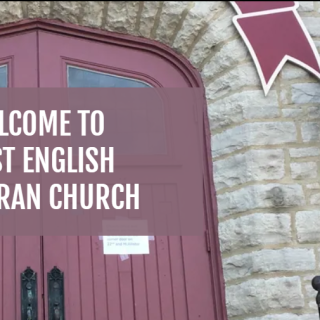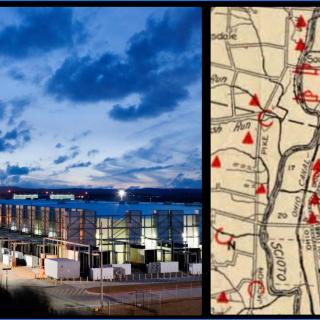Advertisement
The City of Columbus, the Central Ohio Transit Authority (COTA), and the Mid-Ohio Regional Planning Commission (MORPC), as some would argue, are making a $6 billion dollar bet on the LinkUS November 5 levy vote. More specifically, that dudes are going to give up their monster trucks or Dodge Chargers for “BRTs” or Bus Rapid Transit. While others are going to relinquish their Audis, Mercedes and Tesla’s, even as the numbers of these luxury cars are increasing on Columbus freeways and streets.
Ditching your ride for a bicycle and a bus will not apply to everyone, insists COTA spokesperson Jeff Pullin, but they’re hoping many Columbus residents get on board and leave their car in the garage or forgo a car altogether.
“We are not asking everybody to give up their car, but we know there are people out there, especially people who are younger, who are not really wanting to take on that cost of the car. It costs upward to $600 to $700 a month to have a car in some cases,” he said to the Free Press.
The population projections COTA and MORPC have been pushing for many years now is that Central Ohio will add one million residents over the next 25 years. Numbers which are disputed and scoffed at by some, but a migration to the heart of Ohio which COTA and MORPC are convinced will happen. Thus, Pullin asks, Do you want your half hour commute to gradually become an hour-and-a-half commute?
“We’ve been looking at cities such as Austin that grew very fast, and we’re expected to have a million more people here by 2050 or so. We know that we cannot have a situation where everybody is on 270, 70, 670,” he said. “By building this system, this is going to give those folks the option of not wanting to incur that cost of a car, but it will take the same amount of time, or close to that same amount of time, to get to my job or wherever I want to go. Because the transit is more efficient in our community.”
LinkUS, by all measures, and if the levy passes, will be a massive decades-long effort to reform and modernize Columbus transit (i.e., prepare for more orange barrels over the next 25 years and beyond). It may even help Columbus lose its dubious tag as the most polluted city in North America. The levy will increase COTA’s share of local sales tax from .5 percent to 1 percent and raise between $6 to $8 billion by 2050.
Two Bus Rapid Transit lines or “BRTs” have already been mapped out for West Broad Street and East Main Street and both should be running by 2030. BRTs are “accordion buses” or buses with an extra bus hitched on the back. Most are 60-feet long and can seat 120 passengers. Several other BRT corridors, such as in Northwest Columbus for example, are in the planning stage.
Also intriguing is this phrase being bandied about by COTA regarding LinkUS: “Transit supportive infrastructure”.
“Right now, we have 83 sidewalks, bikeways and trail projects already under consideration that would start as soon as this would be approved by the voter. And those would be built by 2030. And that’s only 150 miles of the 500 miles the LinkUS plan promises. We are hoping to have 150 miles of sidewalks, bike paths and trails done by 2030 with an additional 350 miles to come,” said Pullin.
But some neighborhood advocates – such as the South Side’s Bruce Miller – say LinkUS is leaving them out. Even though COTA claims LinkUS will increase COTA’s entire service across the region by 45 percent.
Miller, president of the Scioto Southland Civic Association, and other Southsiders have had several conversations with COTA and City officials about LinkUS and the Bike Plus plan, which will be supported by the levy.
“The thoughts of our residents were that it doesn’t have a significant impact or cause great improvement to the South Side community,” said Miller. “The projects presented in the plan are disconnected from what (South Side) residents want and or need, and many at the community conversation wanted to know how these projects were selected and why there are so few.”
Miller and others believe the South Side is getting screwed once again for the betterment of other Columbus neighborhoods. Which is disconcerting considering LinkUS’s mission is so much about getting people to a job faster anywhere in Central Ohio.
“Overall, the opinion down here is that if passed it will be the residents of the South Side subsidizing proposed benefits to other portions of the city while our area gets little to nothing with promises of ‘maybe in the future we will revisit your area for review’,” he said.
Mullin responded by saying “these projects take a long time to build” and the West Broad and East Main BRT lines were “a decade in the making.” Currently, the South Side is the only Columbus community with COTA Plus service, which essentially is a ride-sharing service, he says.
“Of the three COTA Plus’s (zones in Westerville, Grove City and the South Side), it is the highest performing and most widely used,” he said. “Because of the success on the South Side, we know that we want to expand to eight other zones as part of the LinkUS plan.”
MORPC had been taking questions about LinkUS, but that deadline for submissions passed back in August. Former mayoral Joe Motil, who feels bikeways, trails and sidewalks should be constructed with taxpayer dollars via the City budget and not through boosting the sales tax, got his questions in about LinkUS at the last minute.
“Specifically, I asked, how many miles of new sidewalks? How many miles of new bike ways? How many miles of new trails? Voters deserve to know the breakdown. Why aren’t regional bus passenger service providers such as Barons and Greyhound, a partner with COTA, MORPC, the City of Columbus, and Franklin County, in our LinkUs regional transportation plan? Why are they excluded? Besides air travel, regional bus providers are currently the only other transportation system that provides regional transportation. Voters also deserve to know your answer to this. I look forward to hearing your response to my questions.”
Did you ever receive answers from MORPC regarding your questions?
“Hell no,” said Motil.



